This post was published on May 2 2010 while on my journey to South African Olympic Trials and the 2012 Olympic team.
“You’re tired. Be careful.” I said to myself after Saturday’s workout. “Lifting heavy 4 times a week on top of 70,000m a week will take it’s toll on your body… “.
Moments later I replied: “Nah, I’m on a roll, I’m making progress! Easing up or taking a day off will cut this party short. I’ve got more in me.”
Score: Rory: 1 – Rory’s Conscience: 0.
At 4.55am on Monday morning I was up and on my way to practice. And it was a very good session. As was Monday afternoon’s practice. Where I pushed a 48 second 100 Freestyle on the last repeat of a grinding set. Something I’m not used to doing.
“See I told you that you had more left in the tank” I said to myself on Monday evening.
I’ve had this kind of conversation with myself many, many times. One in particular stands out…
It was back in 2005 and I had moved from Malawi to South Africa to train. I was working with one of the South African Junior National Coaches, Ryan Skinner. And my training had ramped right up.
The team I swam for in Malawi focused on quality rather than quantity. Our workouts covered about 4000 meters a day and we only swam single sessions. I felt like I needed more… And more I got!
Ryan’s program had us doing doubles and averaging about 15 – 16 000 meters a day. 400% more than I was used to doing. Motivated and determined to make it work I got to grinding.
At the start I had to humbled myself. It took every thing I had to attempt keeping up with the 13 year old girls in the squad. Slowly but surely I got fitter and faster. First being able to keep up, then holding my own.
As I got comfortable with the volume I began to swim more breaststroke. But as I made progress I could sense my body beginning to feel the effects of the big increase in volume.
“You’re tired. Be careful.” I said to myself after a big week of training. “Going from 4000m a day to 16 000m a day will take a toll on your body.”
“You are keeping up with the rest of the squad now though, keep it going, the gains you are making are huge!” I would reply.
That conversation happened over and over for an full year. “No pain, no gain” after all, right?
As the year progressed I found myself in more and more pain. But as the pain increased so did my ability to talk myself out of it and carry on pushing forward.
I began to find it hard to walk though and climbing stairs was an absolute nightmare. Then my mom came to visit me.
One day after practice she noticed me walking differently. I was clearly in pain, even if I failed to acknowledge it. In a very loving way she gave me orders to see a Doctor as soon as possible.
It turned out that I had what they call a “Sportsman’s Hernia”. Which involves a tear of the adductor muscles, usually high up near the attachment to the pubic bone. It is common in sports where repeated strain is placed on the groin and pelvic area. All that breaststroke kick had taken it’s toll.
It took two surgeries and 13 months of rehab to get back into the pool.
Back to Tuesday this past week and I’m working through a set that is challenging. But by no means impossible.
I can feel the right side of my body tighten up. I make it through the first half of the set but I’m finding it excruciatingly painful to breathe.
“No pain, no gain” though remember. So I soldiered on through the workout.
Coach Steve picked up that I was struggling and cut my practice short and sent me to the Athletic Trainers. Where I was told I had strained an oblique…
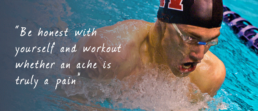
Jessica Cickay published an article recently for runners. But here message was spot on for me too.
“Runners need to be honest with themselves and decide whether an ache is truly a pain” she writes. “Listening to your body and its injury cues are major components of what it means to be a successful runner.”
The points in her article are specific to running. But can be easily adapted to determine if you’re training through pain and decide when to back off. Here are the questions she suggests asking yourself:
1. Am I adjusting my stroke to ease the pain?
When injured my groin in 2005 Ryan would often ask “why are you kicking like that?”. He was reference a change in the mechanics of my kick motion. My body had adjusted to ease the pain. If your stroke unintentionally looks or feels different you need to assess the reasons why.
2. Does the pain get better as I swim and then hurt after?
This often seems to happen with overuse injuries. You feel it before, you feel it after, but while you are working the pain seems to disappear.
3. Am I swimming through pain?
If you feel pain or you anticipate it, you’ve got a problem. Swimming through it won’t only prolongs injury, it zaps the fun out of your workouts too.
4. Why Am I Doing This?
Make sure to check your motives and goals. Are you getting enough rest to allow your body to adapt?
I should have listened to my body when it told me to ease up last Sunday. Lesson learned.
This is no excuse to be soft, but sometimes you need to be smart about your training. Training though pain isn’t always the best option. Being honest with yourself is the key to knowing when it’s time to push through and when you need to ease up. No one knows your body better than you do. It is yours after all

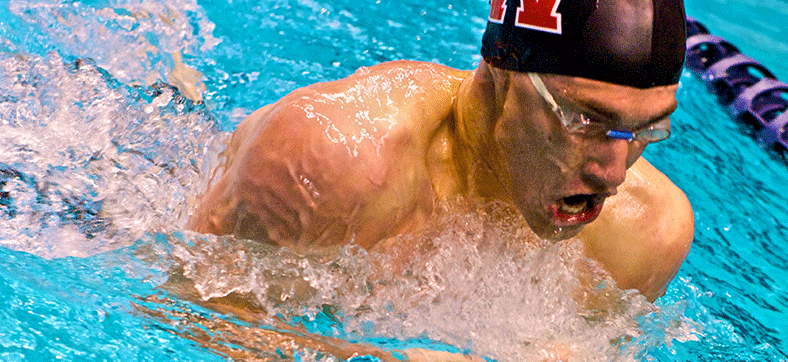


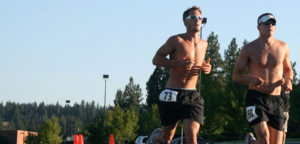
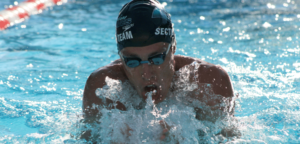

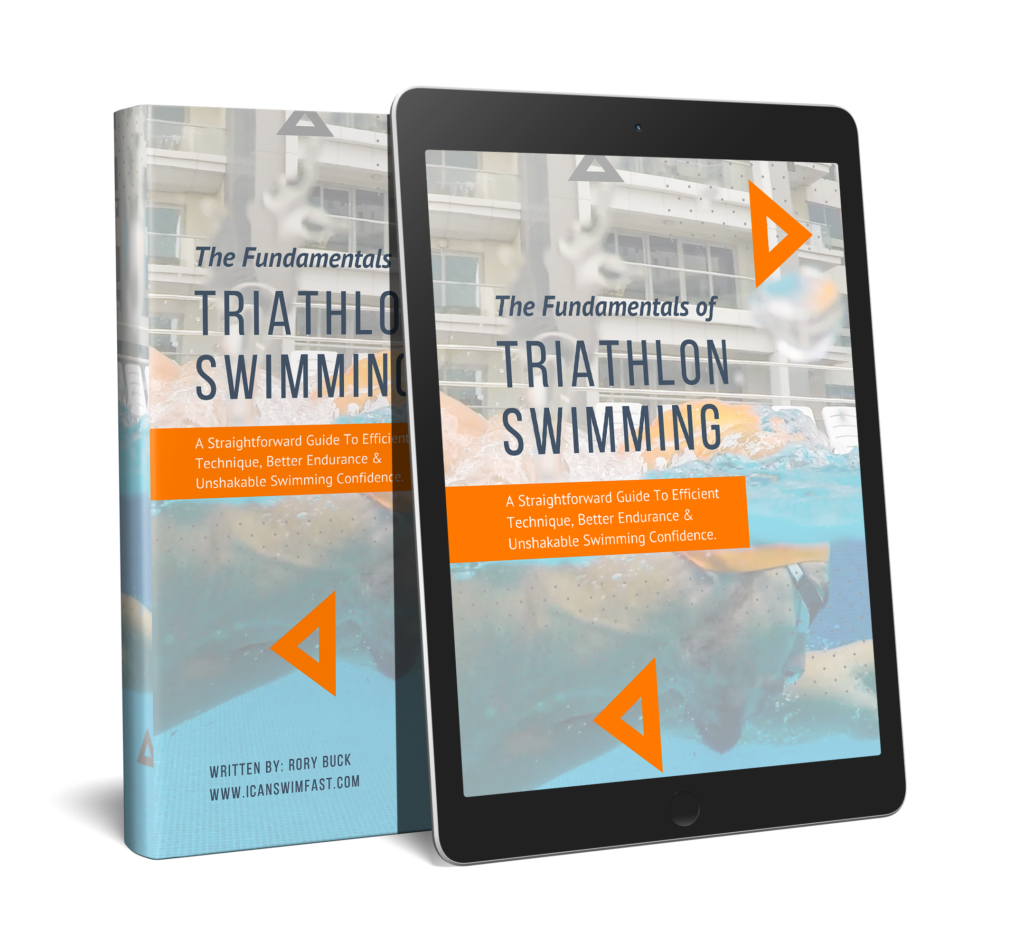

3 thoughts on “Training Through Pain; The Skill Of Learning When to Back Off”
This is so tough to do, a struggle I battle with all the time. When training like you do or the long hours for Ironman, listening and learning from your body is so important. Trust your instincts and in the end it will pay off.
Aha, you are learning well in your old age! Heed your very own words and enjoy the extra time in bed!
Brilliant post. So much easier to say than to do, but truly smart advice. I find the same concept applies to me with illness. Sometimes I think I drag out a cold much longer than needed just to not be a wuss – where had I just let up and given my body a break up front, the recovery would be much quicker.